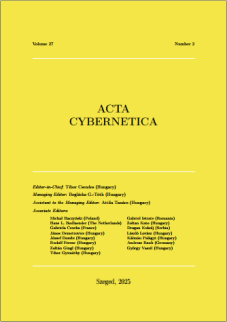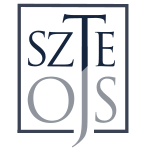Radial Harmonic Fourier Moments for CT-based Quantitative Radiomics
DOI:
https://doi.org/10.14232/actacyb.312363Keywords:
radiomics, lung CT, quantitative imaging, radial harmonics, orthogonal momentsAbstract
Radiomics is an emerging field of CT image processing, that offers noninvasive quantification of tumour phenotypes using quantitative image features. Radiomics analysis has promising applications in cancer treatment and personalized medicine, like treatment planning and the prediction of clinical factors. However, the optimal feature selection is not established in the literature, and the applications usually involve data mining of a large pool of features. In this paper, we propose to extract higher-level radiomic features using Radial Harmonic Fourier moments (RHFM). Image moments, and specially orthogonal Fourier moments are widely used in image processing, providing efficient and invariant shape descriptors. In particular, RHFMs are known to perform well on small noisy images, making them a promising candidate for CT tumour analysis. Motivated by these advantages, we developed a feature extraction scheme based on RHFM, and we performed radiomics analysis on lung CT images of non-small cell lung cancer patients. The proposed method is validated on multiple annotated datasets following the literature guidelines, evaluating the accuracy, stability, reliability, and prognostic value of the proposed features. The results show better reliability and otherwise comparable performance compared to the state-of-the-art wavelet descriptors. Furthermore, Fourier moments provide higher level of flexibility and possible adaptivity compared to wavelets, and unlike wavelet features, RHFM features are invariant of position, size and orientation in the tumor region.
Downloads
Downloads
Published
How to Cite
Issue
Section
License
Copyright (c) 2025 Acta Cybernetica

This work is licensed under a Creative Commons Attribution 4.0 International License.







